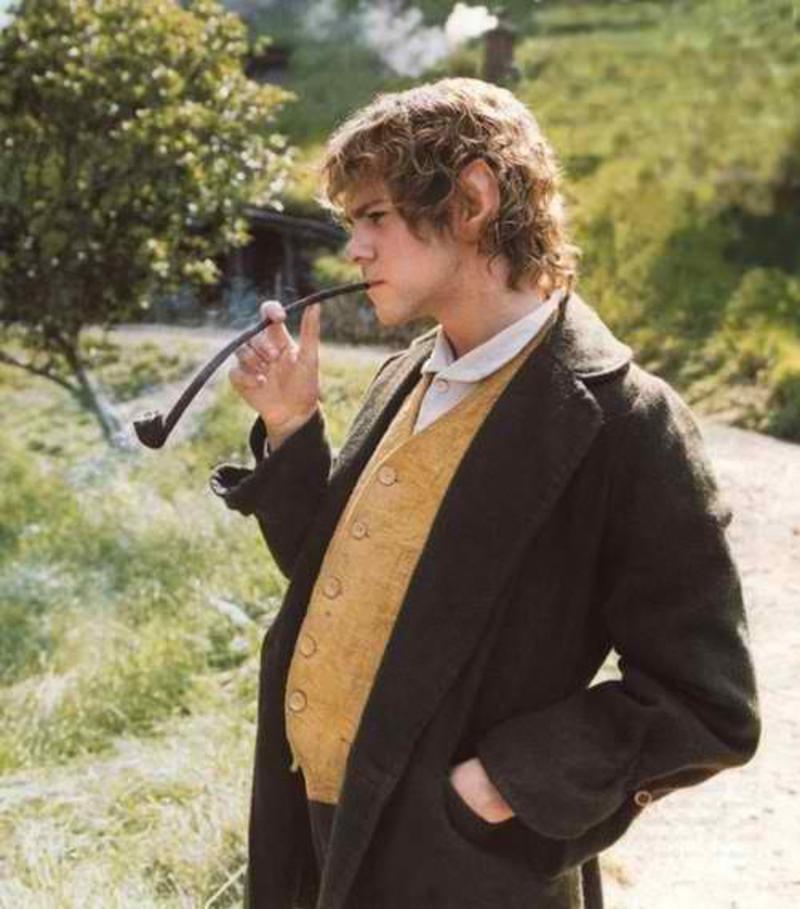Is Drug Addiction Really One of the Central Themes in tolkien's Work? (23.07.14 by Imogen Reed) -
Comments
Drug References in tolkien's work Compared to the Movies
In Peter Jackson’s Hollywood rendering of both The Lord of the Rings and The Hobbit, drug references are laid on thick and fast such as the nods to, “the finest weed in the Southfarthing,” and Saruman claiming that Gandalf’s, “love of the Halflings weed has clearly slowed your mind.” The extended DVD version of The Two Towers had Merry and Pippin smoking what appeared to be pipe tobacco in the ruins of Isengard, but the maniacal giggling and thick smoke that drifts out of the room suggest that it is something stronger.
More examples in the movies follow in The Hobbit trilogy. Gandalf offers Radagast his Longbottom Leaf pipe to, “ease his nerves,” and after taking a puff, Radagast crosses his eyes and looks light headed. Later on, Saruman again shows his disapproval of the substances that others indulge in and says Radagasts mind has been damaged as he has, “eaten too many mushrooms,” which could be perceived as a nod to magic mushrooms.
However, the referencing of drug abuse in Peter Jackson’s movies is an exaggerated take on the actual references, if any at all, that appear in Tolkien’s novels. A number of Tolkien fans were mildly offended by the inaccurate references that pipeweed in the films was anything other than tobacco. In Tolkiens work he makes it quite clear that Middle Earth's pipeweed is just tobacco. Indeed the slang term ‘weed,’ in reference to marijuana, did not appear until after The Lord of the Rings was published.
Gollum as a drug addict..?
Many people associate the character of Gollum, who was created by Tolkien at the start of the twentieth century, as having a lot in common with people suffering from problems of reliance on alcohol or drugs that are around today. He is absolutely consumed by his addiction to the ring and the way in which his addiction affects his physical appearance and mental functioning is common to many addicts of alcohol or drugs in rehabilitation programs today. However, many of the harder drugs that people associate with Gollum’s personality – heroin, crystal meth, etc. – were not around in Tolkien’s day and it is more likely that if Tolkien did have experience of addiction it would be involving alcohol abuse, or morphine or opium addiction. Direct allegory was not a part of Tolkien’s repertoire, but some have claimed that drug addiction could have been the inspiration behind the character of Gollum.
Drug Taking in Tolkien a Misinterpretation
The rumors about drugs and Tolkien’s relationship to them are said by Professor Christopher Ralph C. Wood, in his paper, Tolkien’s Lord of the Rings: A Christian Classic Revisited, were merely spread as a result of the popularity of Tolkien’s classic tale among American youth culture. He claims that hobbits became heroes in 1960s America and gained a cult following with, “Frodo Lives,” being a popular graffiti tag, and T-shirts that declared that, “Tolkien is Hobbit forming.” Wood claims that the obsession with hobbits provided a useful escapism at a time when carnage was rife in Vietnam and a nuclear threat was poised to wipe everyone out. The popularity among youth culture, Wood claims, gave wilful rise to the rumor that Tolkien was a drug addict. As Wood puts it:
“...a whole generation young Americans could lose themselves and their troubles in the intricacies of this triple-decker epic. Indeed, the rumor got about – a wish seeking fulfilment, no doubt – that Tolkien had composed The Lord of the Rings under the influence of drugs.”
Conclusion
While it is unlikely that Tolkien was under the influence of drugs when we created Middle Earth, the imagination it sparked in 1960s American youth culture as they lost themselves in his worlds was synonymous with the escapism more normally associated with drug taking. While the references of drugs are far more elaborate in the motion picture versions of Peter Jackson’s The Hobbit and The Lord of the Rings trilogies, the references are far more understated than those in the books. It is, however, less apparent whether the power of the ring and the character of Gollum were based on Tolkien’s firsthand experience of drug addiction.
Spread the news about this J.R.R. Tolkien article:
